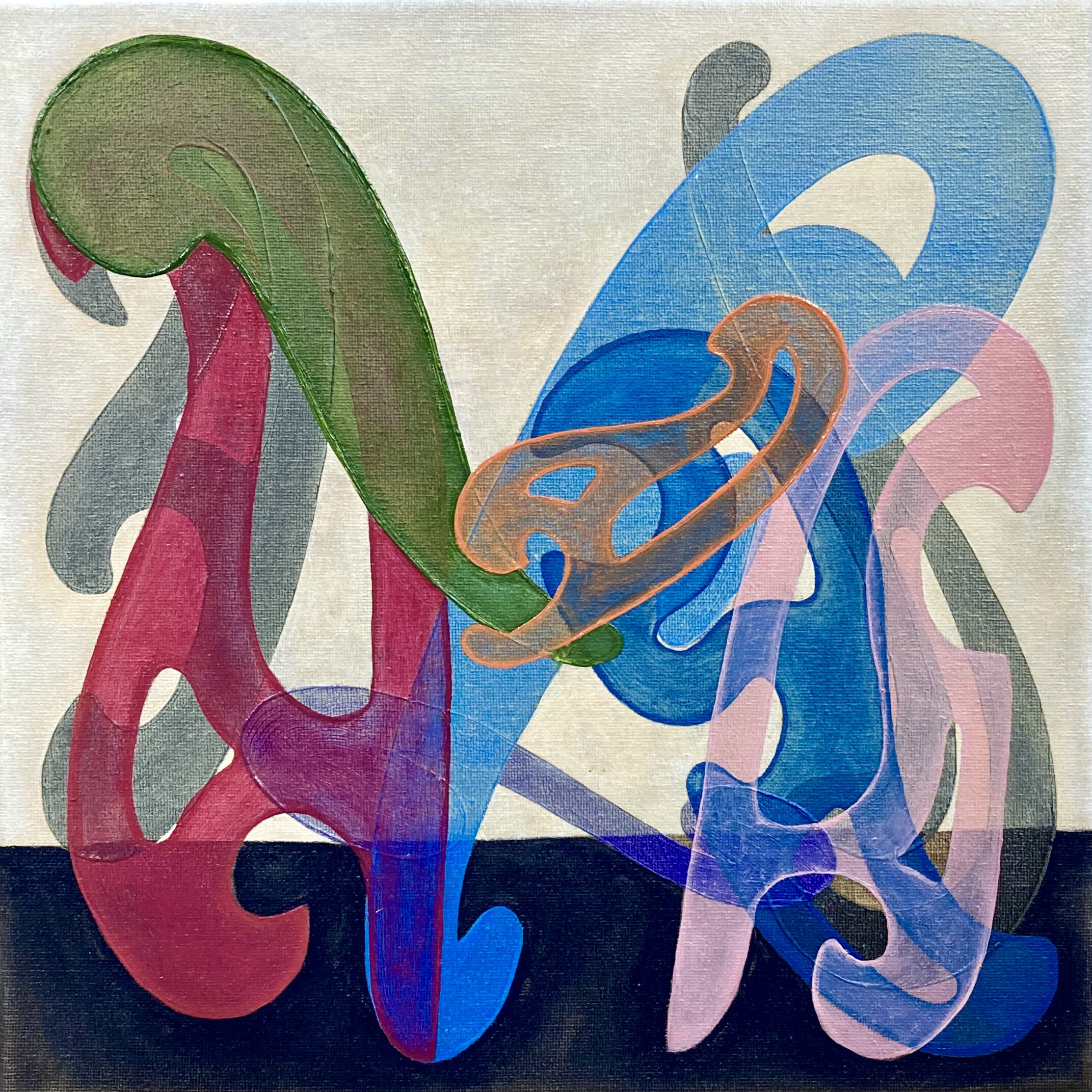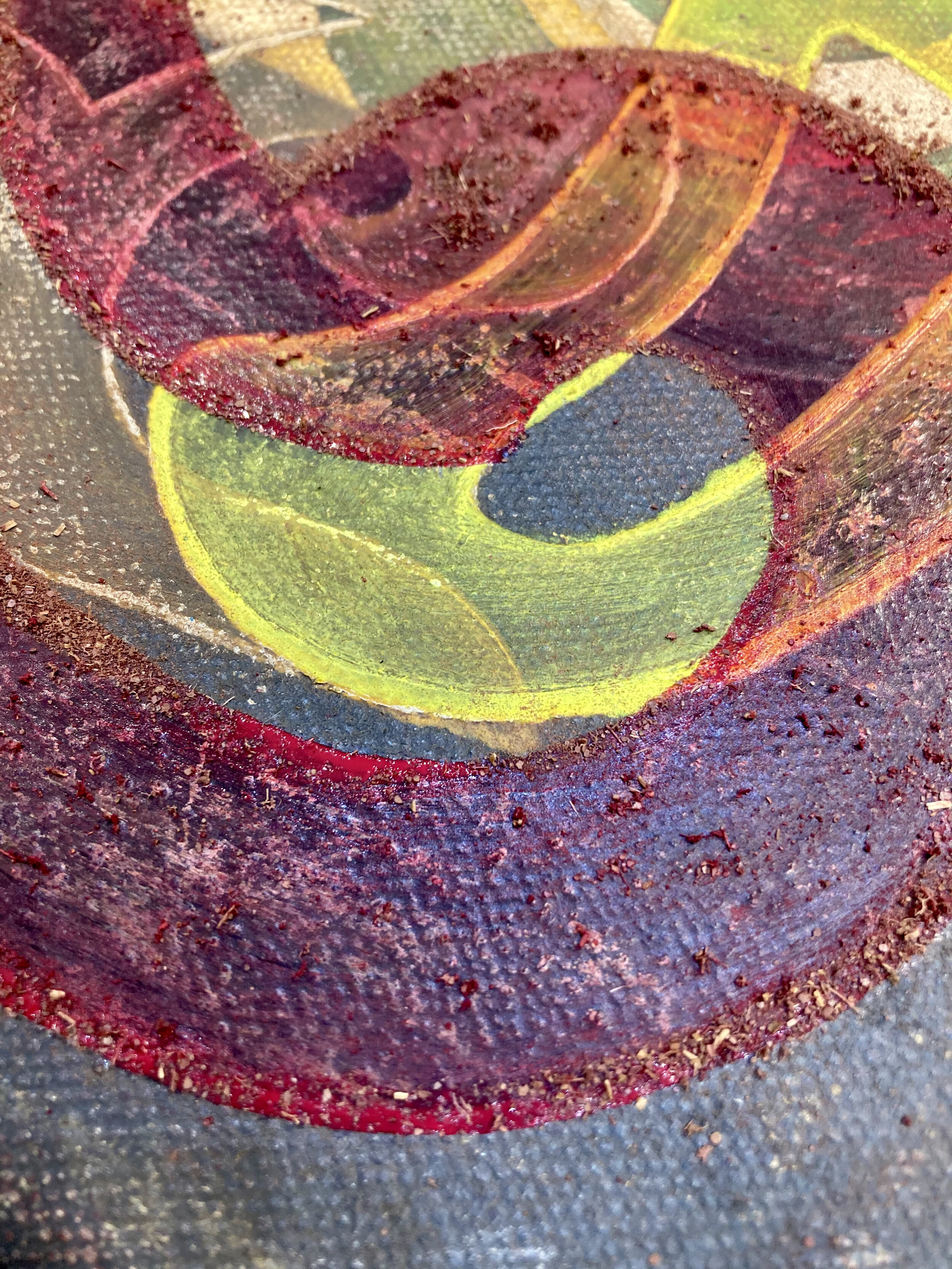
The French Curve
French Curve #1-dfa—oil, graphite on canvas, 12 x 12 in., 2019.
French Curve #4-css—oil, wildcrafted Schoodic Peninsula lichen powder, cold wax on canvas, 12 x 12 in., 2020.
French Curve #5-oak—oil, wildcrafted red oak pigment powder, graphite on canvas, 12 x 12 in., 2021.
French Curve #6-atk—oil, wildcrafted black birch pigment powder, graphite on canvas, 12 x 12 in., 2021.
French Curve #7-gbb—oil, wildcrafted red oak pigment powder, graphite on canvas, 12 x 12 in., 2021.
French Curve #8-lmc—oil, graphite on canvas, 12 x 12 in., 2021.
French Curve #9-thb—oil, gold leaf, graphite on canvas, 12 x 12 in., 2021.
French Curve #10-hmr—oil, graphite on canvas, 12 x 12 in., 2021.
Installation view
Detail of French Curve #5-oak: showing the texture of the red oak pigment.
Another detail of French Curve #5-oak
French Curve #5-oak: framed for delivery to recipient.
The French Curve Series:
A Rule-Based Contingency Project
Rules for each painting in this series:
All paintings are sized proportionally to the templates themselves: 12 x 12 in., each with a half-inch border.
All paintings have a horizon line, the placement of which is contingent on the resulting configuration of all templates used in the final image.
Templates are intentionally painted flat, mimicking the true nature of the forms themselves—No shading is allowed within the individual templates.
Each painting is a portrait of an individual rendered as the initials of their name, with the first initial painted last to make it the top-most letter and thus the first one we encounter as viewers.
All templates used in making a single letter must overlap somewhere to be physically connected.
Each letter is designed to fill the space of the canvas as much as possible.
All templates used in a single letter must be painted in the same color family unless a single template is shared between two letters.
Use as many templates as needed to establish a letter from the English alphabet.
This rule-based series of ongoing paintings draws inspiration from artifacts I played with as a child. I inherited my father’s drafting and engineering tools. This series specifically utilizes his French curves and triangle templates. The French Curve Series highlights these tangible, worldly objects layered directly on top of one another to establish abstracted letter forms that reveal unexpected translucencies and shapes of tinted color.
Layering pigments of varying opacity gives nod to Classical Western painting’s luminosity while allowing for the interplay of gesture and form. It recalls the angular, jewel-toned abstractions of one of my father’s favorite artists, Lyonel Feininger (Cubism) and the collaged, layered stencil numbers of Jasper Johns (Pop Art).
Templates have been used since human beings traced their hands on cave walls. Everyday objects have been raised to works of art ever since Duchamp’s first readymades. By remaining faithful to the shapes of the manufactured templates, I strive to push the historical conversation with these readymade tools into the contemporary. I recognize the integral role the readymade has played in art, design, and the sciences. Whereas ancestor humans utilized their own hands as the first “readymade” templates to explore symbolic ideas, The French Curve Series is rule-based and expressionistic. Personal experience, geometry, visual semantics, and art history all inform this series. The French Curve Series adapts Duchamp’s strategy regarding the readymade and rule-based process, as well as Todd Bartel’s concept of the “uncollage” — “uncollage is a composite image made with seamless unison. In the mind, uncollage is an intellectual coupling.” [Kolaj Magazine #34, The Third Thing is Immaterial]
In utilizing these uncollaged forms, The French Curve Series expands the readymade with personal significance. Each painting methodically follows a set of simple contingency guidelines, or rules. Additionally, Whereas Johns’ and Duchamp’s use of the readymade was depersonalized, my use of these templates retraces the actions of my father, who designed for NASA, and who taught me how to use drafting tools when I was a young child. His hands and my hands traced the same exact objects. A direct connection between us across time and space.















